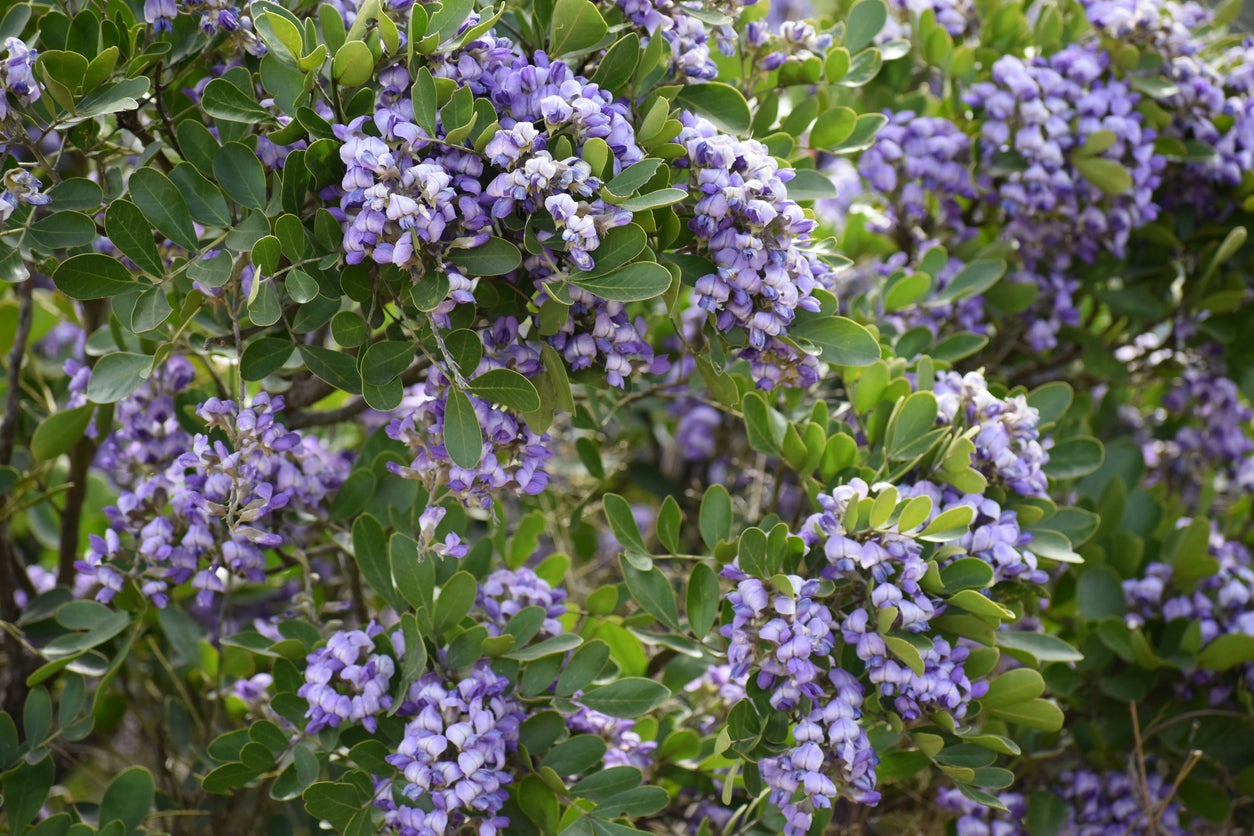Texas Mountain Laurel Care: What Is A Texas Mountain Laurel Bush


Texas mountain laurel is a tough evergreen shrub or small tree native to Mexico and the American Southwest. It is known for its attractive, fragrant flowers and its extreme drought hardiness. Keep reading to learn more about growing Texas mountain laurels in the landscape.
Texas Mountain Laurel Info
What is a Texas mountain laurel? Of no relation to the flowering mountain laurel shrub native to the eastern United States, this shrub/tree is a native of the Chihuahuan desert. Also known as mescal bean, the Texas mountain laurel (Dermatophyllum secundiflorum syn. Calia secundiflora, formerly Sophora secundiflora) ranges from Texas through the American Southwest and down into Mexico.
Slow growing, it can reach up to 30 feet (15 m.) in height with a spread of 15 feet (4.5 m.), but it often stays much smaller than that. It produces vivid blue/purple flowers shaped like wisteria blossoms with an intense fragrance that has been compared, not unkindly, to grape flavored Kool-Aid.
These flowers eventually give way to thick seed pods containing bright orange seeds that, while beautiful, are very poisonous and should be kept away from children and pets.
Texas Mountain Laurel Care
As long as you live in the right climate, growing Texas mountain laurels is very easy and rewarding. A desert native, the plant is both heat and drought tolerant, and it actually thrives in poor conditions.
It prefers well-draining, rocky, infertile soil, and it needs full sun. It does not respond very well to pruning, and should be cut back only slightly when absolutely necessary in the spring.
It is hardy down to 5 degrees F. (-15 C.) and can usually survive winters in USDA zone 7b. Due to its toughness and its native status in the Southwest, it is an excellent choice for xeriscaping and for road medians, sidewalks, and courtyards, where soil is poor and maintenance is low.
Gardening tips, videos, info and more delivered right to your inbox!
Sign up for the Gardening Know How newsletter today and receive a free copy of our e-book "How to Grow Delicious Tomatoes".

The only child of a horticulturist and an English teacher, Liz Baessler was destined to become a gardening editor. She has been with Gardening Know how since 2015, and a Senior Editor since 2020. She holds a BA in English from Brandeis University and an MA in English from the University of Geneva, Switzerland. After years of gardening in containers and community garden plots, she finally has a backyard of her own, which she is systematically filling with vegetables and flowers.
-
 4 Superfast Composting Methods: Turn Waste Into Garden Gold In 30 Days Or Less
4 Superfast Composting Methods: Turn Waste Into Garden Gold In 30 Days Or LessTry the fastest composting methods to turbocharge your pile and transform kitchen scraps and garden waste into finished compost in just a few weeks.
By Mary Ellen Ellis
-
 Best Spider Plant Soil – Complete Soil Guide And Expert Tips For Keeping Plants Happy
Best Spider Plant Soil – Complete Soil Guide And Expert Tips For Keeping Plants HappySpider plants are fun and easy plants to grow, but what is the best soil for a spider plant? Selecting the right soil is important so they can thrive.
By Bonnie L. Grant
